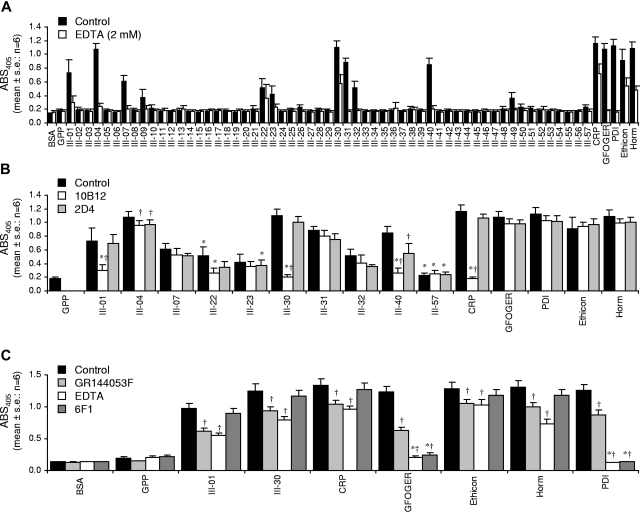Figure 4.
Adhesion of human washed platelets to Toolkit-III peptides. The response is given as absorbance at 405 nm (mean ± SE: n = 6). (A) For control platelets, adhesion was observed to the following substrates (in decreasing order of magnitude): CRP (in 6 of 6 experiments); PDI (6/6); III-30 (6/6); Horm (6/6); III-04 (6/6); GFOGER (6/6); Ethicon (6/6); III-31 (6/6); III-40 (6/6); III-01 (5/6); III-07 (6/6); III-22 (5/6); III-32 (6/6); III-23 (5/6); III-09 (4/6); III-49 (4/6). Adhesion of EDTA-treated platelets was observed to the following substrates: CRP (5/6); III-30 (5/6); Ethicon (6/6); Horm (6/6); III-22 (1/6); III-01 (3/6); III-04 (3/6); III-23 (4/6). (B) Effect of GpVI-blocking antibody (10B12, 20 μg/mL) and a negative control antibody (2D4, 20 μg/mL) on static adhesion of washed human platelets to selected Toolkit peptides. *Not significantly different from adhesion to GPP. †Significantly different from control within ligand group (P < .05). (C) Effect of αIIbβ3 antagonist GR144053F (2 μM) and anti-α2β1 antibody 6F1 (5 μg/mL) on static adhesion of washed human platelets to Toolkit peptides III-01 and III-30. *Not significantly different from adhesion to GPP. †Significantly different from control within ligand group (P < .05).

